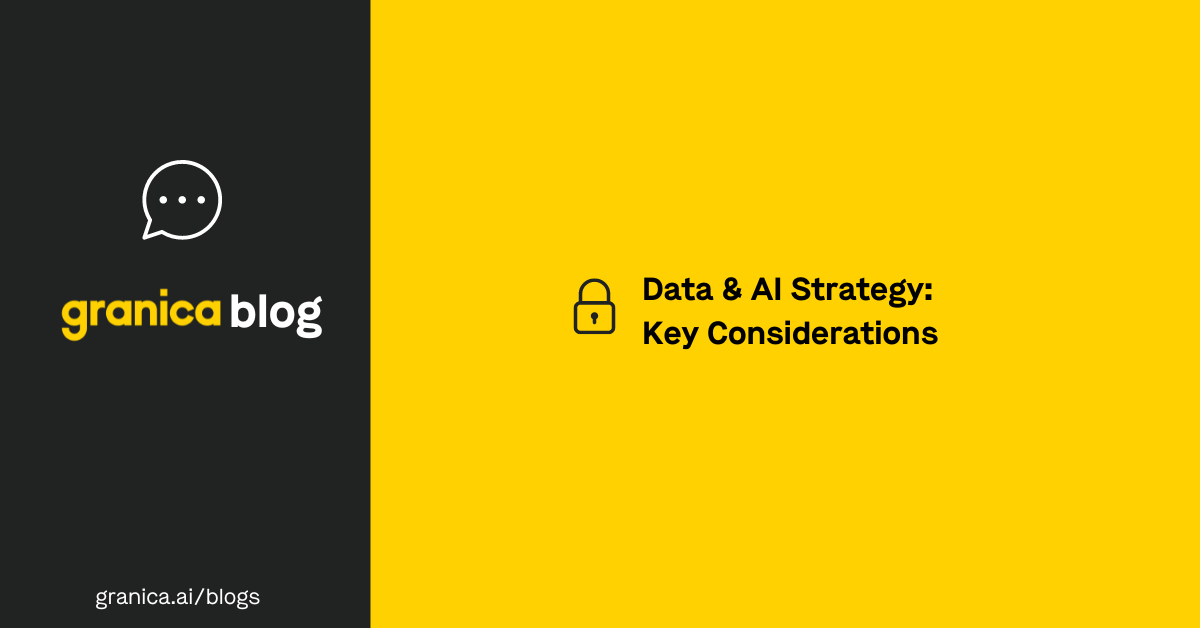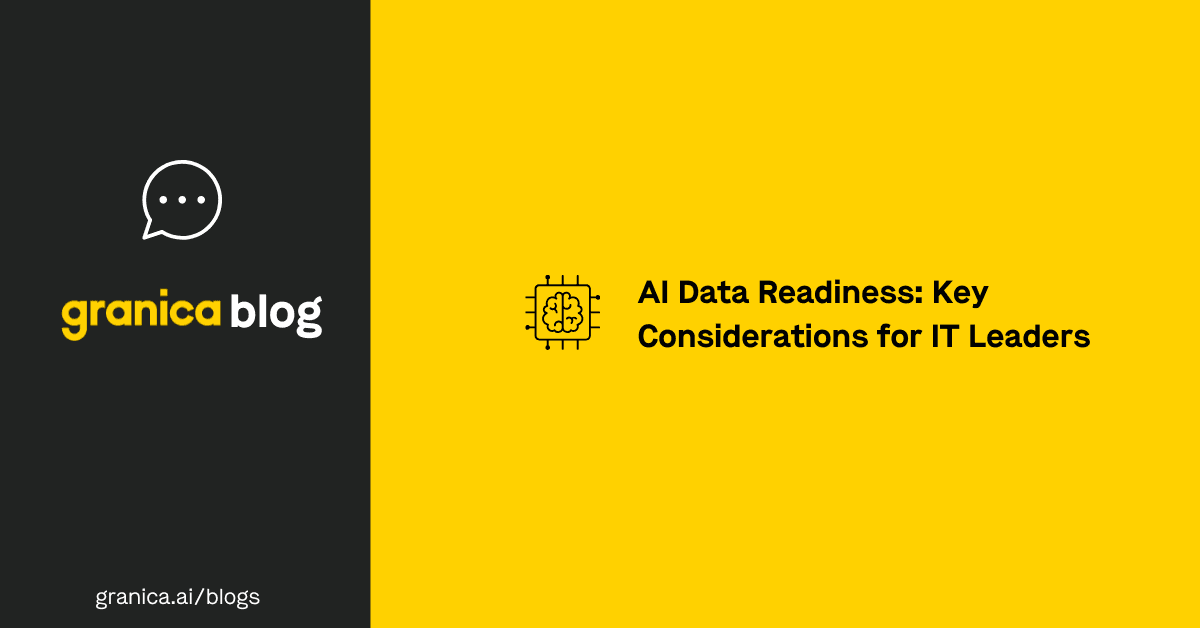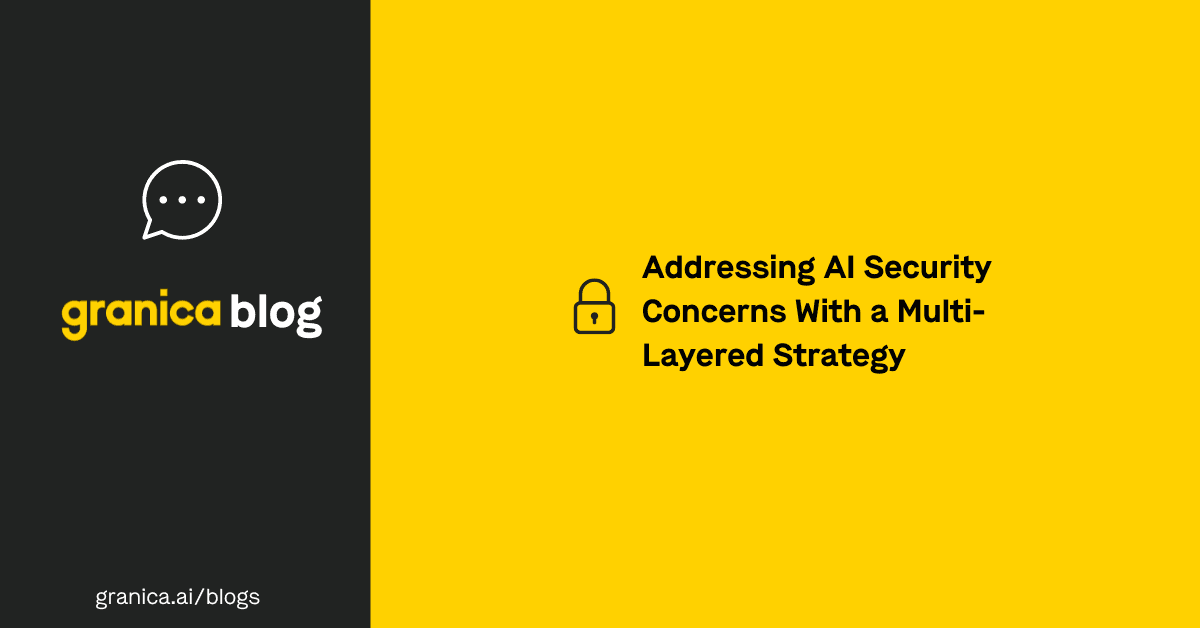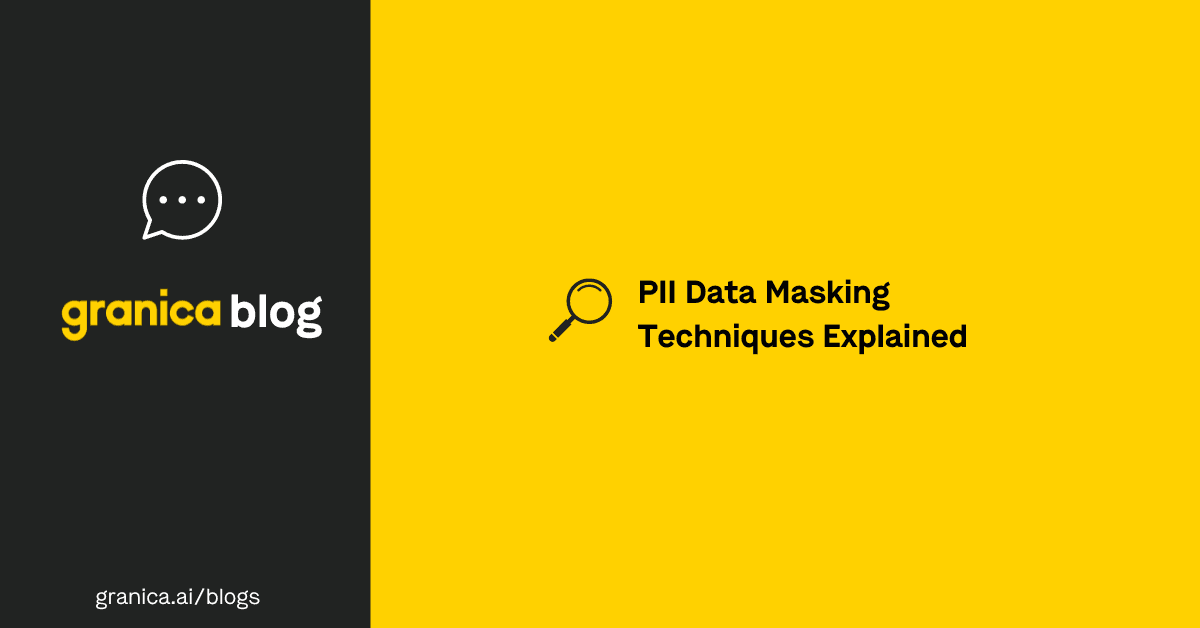An organization’s data strategy defines its long-term plans for collecting, storing, using, and securing data. It outlines the people, processes, technologies, and policies required to comply with data privacy regulations and ethical standards while minimizing costs and extracting the maximum value from data assets.
A data strategy is especially important for companies adding AI/ML to their toolkits because of the sheer scale of data used for training, fine-tuning, and inference. In addition to this significant quantity, data quality also plays a significant role in AI outcomes, as issues in the training or fine-tuning stage can cause inaccuracies, toxic (offensive) language, and biased decision-making.
A comprehensive strategy ensures that organizations have the required infrastructure and resources to support, curate, and refine very large datasets to improve the value of their AI investments. This blog describes the key considerations for a data and AI strategy and provides tips and best practices to help organizations get started.
Key considerations for a data and AI strategy
| Data consideration | Description | Tips |
|---|---|---|
| Governance | Defining the tools, policies, and procedures used to manage data throughout its lifecycle | Provide clear communication and continuous support for relevant business units. |
| Cost | Controlling the costs associated with acquiring, storing, screening, cataloging, and protecting data. | Use compute-efficient data lake compression and PII masking tools to optimize AI data costs. |
| Infrastructure | Ensuring the underlying infrastructure is robust enough to support AI data needs. | Make sure infrastructure is scalable enough to adapt to changing demand. |
| Privacy & security | Protecting AI datasets from malicious attacks or unintentional exposure. | Mitigate AI-specific attacks with targeted privacy tools like PII discovery and masking, and security tools like AI firewalls. |
| Ethics | Addressing concerns around the ethical use of AI in ways that mitigate bias, toxicity, and environmental impacts. | Use bias and toxicity detection tools to improve AI inference quality while reducing harm. |
Every organization’s data pipeline, AI architecture, and business goals are unique, and so its data strategy follows suit. Five of the most important factors to consider when developing a data and AI strategy include:
Governance
A comprehensive data governance framework is the foundation of a successful data strategy. Data governance defines the roles and responsibilities for managing data throughout its lifecycle and the quality standards, management processes, and access controls employed. It involves a combination of tools, policies, and procedures that each organization should tailor to its needs.
Because effective data governance can disrupt existing business processes, it requires strong leadership buy-in, clear communication, and active support from all affected business units.
Cost
Data is one of the major factors driving up the cost of AI and machine learning applications. AI/ML uses massive datasets for pre-training, fine-tuning, inference, retrieval-augmented generation (RAG), and generative AI user prompts. A data strategy can help organizations manage AI costs associated with:
- Acquiring training data
- Storing data
- Screening data to remove PII (personally identifiable information), toxicity, and bias
- Cataloging and labeling data
- Protecting data and its supporting infrastructure against attacks
There are several techniques and technologies that should be incorporated into an AI data strategy to help cut costs. These include:
-
Data lake compression to shrink AI training data sets, reduce storage costs, and even speed-up query performance. A lossless, ML-based compression tool like Granica Crunch automatically compresses data as soon as it enters the data lake or lakehouse for continuous cost optimization.
-
Data tiering to organize data based on utility, keeping valuable AI training data in hot storage to maximize performance with less-accessed data in inexpensive cold storage.
-
PII data discovery and masking using a compute-efficient tool like Granica Screen, which continuously cleanses data of sensitive information while minimizing the utilization of expensive cloud compute units.
Infrastructure
A data strategy should also encompass the infrastructure for each stage of the data lifecycle. It’s best to start with a thorough analysis of the existing technology to determine if it can support the organization’s AI data goals and identify where new tools are needed.
Organizations should ensure that the data infrastructure is scalable enough to adapt to increased (or decreased) demand, that each component easily integrates with other technologies in the data pipelines, and that admins follow security best practices to prevent breaches.
Privacy & security
Data breaches are a major threat to any organization adopting data-heavy AI/ML technologies like genAI. A recent survey by HiddenLayer found that 77% of responding companies had already faced AI data breaches. Failing to protect data can have serious regulatory and financial consequences, so security must be a central component of any AI data strategy.
Organizations must also ensure that private information such as social security numbers, bank records, and confidential company data is properly screened before being ingested by an AI model. A successful attack could expose that information, and the model itself could unintentionally leak private details in outputs.
An ideal AI data privacy and security strategy involves a three-layer approach:
 Prompt input and output security
Prompt input and output security
Using targeted security policies, procedures, and tools to defend against AI-specific attacks like prompt injection and data linkage. Examples include AI firewalls, PII data masking, and bias and toxicity detection.
 AI model security
AI model security
Ensuring that models (whether developed in-house or purchased from a third party) are developed according to secure practices to protect against new, unknown attack vectors. Examples include using the Explainable AI (XAI) methodology to ensure engineers understand how to defend weaknesses, and continuously validating model security to detect any weaknesses as inferences grow more complex.
 AI infrastructure security
AI infrastructure security
As mentioned above, the underlying data infrastructure must be adequately protected according to security best practices. Examples include using policy-based access control (PBAC) with context awareness to prevent unauthorized access, using automated patch management to ensure vulnerabilities are patched as soon as possible, and deploying infrastructure observability tools like Security Orchestration, Automation, and Response (SOAR) and AIOps.
For a more in-depth analysis of AI privacy and security concerns and protection strategies, download our AI Security Whitepaper.
Ethics
As AI adoption rises, so do the ethical concerns surrounding how consumer data is used, the potential for biased decision-making, and AI’s impact on the environment. A strong data and AI strategy will help organizations navigate these ethical issues while improving AI outcomes.
The strategy should include policies that elicit clear, unambiguous consent from users before their data is used for AI training or inference, even when they aren’t protected by data privacy regulations. Screening tools should be used to detect and mask sensitive information, find and remove toxic language like racial slurs, and identify signs of bias in AI outputs. When possible, companies should seek to reduce their carbon footprint, for example, by using more resource-efficient hardware and software to decrease power utilization and heat output.
Improving data quality and AI outcomes with Granica
Developing a comprehensive data and AI strategy can help companies reduce costs, improve data efficiency, mitigate breach risks and compliance issues, and maximize AI value. Granica is an AI data platform that optimizes storage costs in cloud data lakes and lakehouses, cleanses data of sensitive info, bias, and toxicity during training and inference, and provides deep visibility into data access by role. Granica’s lightweight, compute-efficient software, lossless compression algorithms, and state-of-the-art PII discovery accuracy help companies extract the maximum value from their data while improving the quality of AI/ML decision-making.
Get a demo of the Granica platform to learn how it can help with your data strategy for AI.






